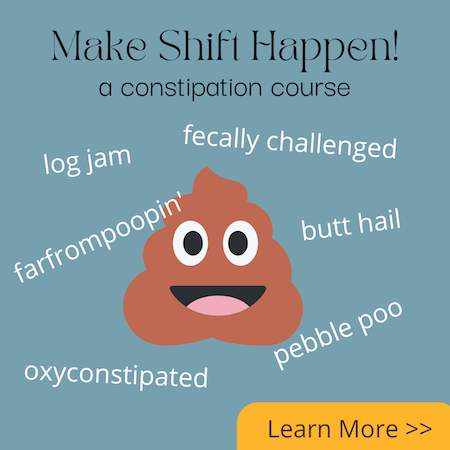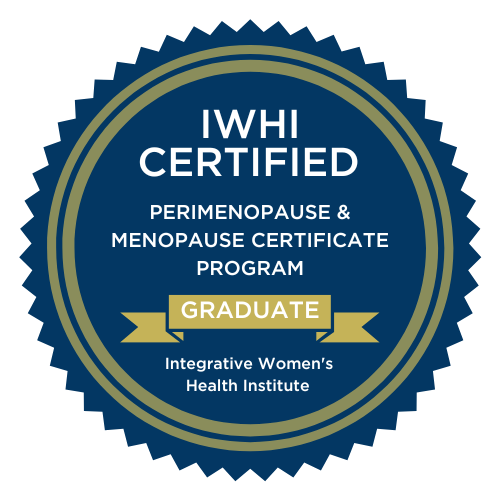Vitex, (Vitex agnus-castus), also known as Chaste Berry, is one of the most popular herbs used as menstrual cycle regulator.
Indications supported by clinical trials [1]:
- PMS, especially premenstrual mastalgia and fluid retention
- amenorrhea, especially related to hyperprolactinemia
- oligomenorrhoea (lengthened cycle)
- polymenorrhoea (shortened cycle)
- fibrocystic breasts
- progesterone deficiency
- luteal phase dysfunction
- infertility due to decreased progesterone levels or hyperprolactinaemia
- recurrent miscarriage, especially when the miscarriage starts with spotting and is due to progesterone deficiency. 10% of miscarriages are from low progesterone.
- insufficient breast milk

Margo reading about Vitex.
- fibroids
- endometriosis
- follicular ovarian cysts
- irregular menstruation
- menopausal symptoms
- fibrocystic breast
Vitex is one of the herbs recommended in the Arvigo fertility protocol and is typically given in a duration for at least 3-6 months.
Vitex has been used by midwives to prevent miscarriage due to low progesterone. Ideally, women start on it three months prior to trying to conceive and use it well into the first trimester to maintain stable progesterone levels. The most recent edition of Botanical Safety Handbook provides no contraindications to using during pregnancy. [2] As always consult with your midwife before taking any herbs during pregnancy.
In the Middle Ages, Vitex was thought to suppress libido. “The truth is vitex neither suppresses nor increases libido. It is a normalizing herb for the reproductive system. In the words of David Hoffman, ‘Vitex will always enable what is appropriate to occur‘.”- from Herbal Healing for Women by Rosemary Gladstar.
Contraindications:
- I do not recommend vitex for young women who have not established a regular cycle yet.
- Vitex is not to be taken with fertility enhancing drugs, oral contraceptives, progesterone containing drugs or creams, dopaminergic or antidopaminergic medications, hormone replacements. *
- “In a very small subset of women with depression, vitex may aggravate symptoms. If this happens simply discontinue use.”-Dr. Aviva Romm, MD [3]. Seriously, this is no joke. I’ve seen depression get much worse with some women. It even happened to me once.
- If you have PCOS, Vitex may not be right for you as it may increase LH. If you have PCOS, seek the help of a trained herbalist, ND, or Women’s Hormonal Health Specialist.
“Typical dosing is 20-40 mg/day though up to 240 mg of products containing the herb has been shown to be safe and effective. Tincture or liquid extract is taken in doses of 20-40 drops up to 3 times/day, though some herbalists recommend as much as 1 measured teaspoon (= 5 mL) per day, either in one dose in the morning or divided into 2 or 3 doses throughout the day”- Dr. Aviva Romm, MD [3]. Many ND’s or herbalists recommend taking the one dose in the morning because “that’s when the pituitary gland is most susceptible.” I don’t believe there is any proof to this method being more effective, but it does make it easier rather than dividing the dose into three times a day.
Here’s how I took it: 3 dropper fulls in a small amount of water first thing in the morning. I took it daily and then took a break during my period. You should see some effect within the first three months of use, if you’re not seeing any difference at all by three months, vitex may not be the herb for you. Typically women take it for 3-6 months for full benefit and then discontinue use. If you experience depression or worsening of PMS symptoms, stop Vitex immediately.
Always put your alcohol tinctures in water, and not directly under or on the tongue if taking on a regular basis.
Balancing hormones should always start with diet and lifestyle changes. Avoid synthetic products, nonorganic foods (especially from meat and dairy), avoid BPA in plastics and cans. Maintaining a healthy weight, reducing stress and inflammation, ingesting good quality fats, having regular bowel movements, and maintaining stable blood sugar all have an effect on our hormones. Herbs are supportive wonderful allies, but shouldn’t be viewed as a magic bullet or quick fix.
Consult a qualified healthcare physician if you think you may have a medical condition. Always tell your physician if you are taking herbal products. Herbs may react adversely with pharmaceutical drugs. This blog is for educational purposes only.
Source 1-Principles and Practice of Phytotherapy: Modern Herbal Medicine, 2e by Simon Mills & Kerry Bone
Source 2- Botanical Medicine for Women’s Health, 1e by Aviva Romm pg 353
Source 3- Top 5 Favorite Herbal Medicines for Women
http://www.ncbi.nlm.nih.gov/pubmed/11159568?dopt=Abstract







